While Wahaka produces many fantastic mezcals that are more readily available, the Wahaka VdM line is some of the hardest to find and most expensive mezcal on the market. The name VdM stands for “Vino de Mezcal,” which is an old name that was used for agave-based spirits before Mezcal and Tequila were considered individual spirits categories.
Most Wahaka mezcal is made by Alberto Morales in San Dionisio Ocotepec, Oaxaca (read about our visit to his palenque), however Wahaka VdMs are from a variety of different producers who live in remote locations throughout Mexico. They are produced using vastly different techniques, and they vary greatly in the types of agave that are used to produce them. These are all highly artisinal, small-batch creations.
The Wahaka team scours the most remote regions of Mexico to find and bottle these incredible mezcals for sale in the US. Through their VdM label, they’re able to promote a wide variety of production methods and different mezcal-producing regions. VdMs are not certified Mezcals, so they don’t follow the restrictions that may limit other Wahaka releases. Given the scarcity and demand for these highly prized bottles, we wanted to see if they were really worth the hype (spoiler alert: they are!).
The Pastry War
For this tasting, Tyler and I were joined by our fellow Mezcalerbro, Joseph, who’s helped us with a few other tastings like our Blind Tasting: Mezcal de Pechuga. We’d heard rumors that The Pastry War, an renowned mezcaleria in Houston, had all the Wahaka VdMs ever released. We visited to investigate further. In total they had eleven different VdMs on the shelf, with several backups of many of the bottles. Our information from the Wahaka owners tells us that they’ve released a total of twenty-three VdMs over the years. So The Pastry War didn’t have all of them, but they had more than we’d ever seen in one place.
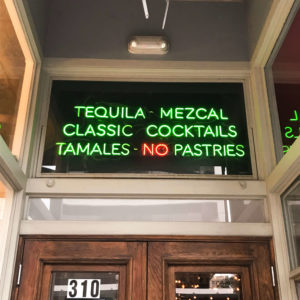
The sign above the entrance to The Pastry War
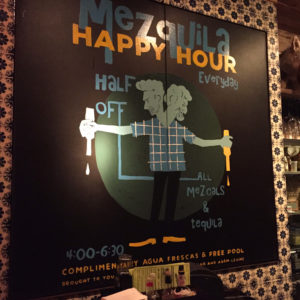
Happy Hour Specials at The Pastry War (No, they don’t carry Mezquila)
Don’t let the name of The Pastry War fool you; they serve no pastries, but they do take the cake for best happy hour in Houston, which includes half off all mezcals from 4-6:30pm every day. Sarah and Krista were behind the bar the night we visited. They were both super knowledgeable about all things agave and Sarah showed us photos from her recent trip to Oaxaca with Del Maguey. Krista informed us that The Pastry War is named after the first Franco-Mexican War (1838-1839), which was marked by the famous ransacking of a bakery in Puebla. In addition to the incredible happy hour deals, they also make the best Michelada in Houston.
If you ever visit The Pastry War, make sure to swing through Anvil as well. It’s a short Lyft ride from The Pastry War and serves some of the best cocktails in H-town. Both establishments are owned and operated by Houston’s “King of Cocktails” Bobby Heugel.
To help organize a tasting of this many mezcals, we tried them in groups of three. When looking at different Wahaka VdM bottles, the easiest way to tell them apart is by looking at the bottom left hand corner of the back label. On that part of the back label, the bottles go by the names below. Here’s a look at the Wahaka VdMs we tried:
Oaxaca - Penca Verde
The Penca Verde was made by Valentin Celis in Zimatlan, Oaxaca using agave Penca Verde. The agave was cooked in an earthen pit, milled by hand with a mallet, and double distilled in clay pots with river water. There were 132 bottles of this released in 2014 at 47% ABV. All three of us agreed this was one of our favorites of the night.
“Sour clay funk, apples. A nice one to start off with.” — Tyler
“Super soft, light touches of clay, tobacco, AMAZING, viscous creamy finish.” — Jonny
“Aroma is earthy and musty. Viscous texture on the palate with a rich tobacco and clay taste along with notes of spice, leather and sweet roasted agave. Excellent! ” — Joseph
Oaxaca - Arroqueno Ensamble
The Arroqueno Ensamble was made by Jose Lopez in Miahuatlan, Oaxaca with agave Arroqueno, Madrecuixe, and Cuixe. The agave was cooked in an earthen pit, milled by tahona, and double distilled with well water in copper stills. There were 90 bottles of this released in 2015 at 47% ABV.
“Dirt, fruit, and dark berries” — Tyler
“Strong floral aromas, palate of big bright fruit, maybe blueberries? Candied orange and mezquite, AMAZING, never tasting anything quite like this before” — Jonny
“Faint fruit, sea mist, sweet tarts, candy. It started smelling like pure honey after sitting in the glass for a bit.” — Joseph
Oaxaca - Espadin Vidrio
The Espadin Vidrio was made by Justino Rios Martinez in Zoquitlan, Oaxaca with agave Espadin. The agave was cooked in an earthen pit, milled by tahona, and double distilled with spring water in copper stills. After distillation in 2007, this mezcal rested in glass for eight years before being released in 2015. There were 90 bottles released at 51% ABV.
“Leather, cinnamon sugar. Just okay, was expecting more considering the long aging” — Tyler
“Tobacco and light fruit. Notes of tanned leather, lovely, but less complex than first two, goes down quick” — Jonny
“Sweet roasted agave and earth. Balanced and lovely all the way through the palate. A great espadin for sure – though not quite on the same level of complexity as the previous ones.” — Joseph
Jalisco - Ixtera Amarillo
The Ixtera Amarillo was made by Macario Partida Ramos in Zapotitlan de Vadillo, Jalisco with agave Ixtera Amarillo. The agave was cooked in an earthen pit, milled with rollers, and double distilled with river water in copper stills. Released in 2014, there were just 48 bottles at 48% ABV.
“Raicilla-like with funk and sour notes. There is an aftertaste like sour Kool-Aid powder that lingers” — Tyler
“Smells like nail polish but in a somewhat pleasant way. Tastes of sour cream, strong sour cream savory finish! Like nothing I’ve tasted before” — Jonny
“Bright, briney, and pungent. Very savory, not sweet. It has a cheesy, almost sour cream like aspect to it. A world of funk!” — Joseph
Jalisco - Azul Telcruz
The Azul Telcruz was also made by Macario Partida Ramos in Zapotitlan de Vadillo, Jalisco. This mezcal, however, was made with agave Azul Telecruz. The agave was roasted in an earthen pit, milled by rollers, and double distilled with river water in a copper and wood still. There were 48 bottles of this mezcal released in 2014 at 48% ABV.
“More mint and green than the previous mezcal. Notes of fresh agave reminiscent of tequila” — Tyler
“Sweet on the nose. Fruit forward aromas. Very pleasant. Highly complex but well integrated flavors. Complex but subtle. Very delicate and delicious…taste like the best Joven tequila I’ve ever tasted.” — Jonny
“Sweet and subtle with lots of faint well-integrated flavors. Muted complexity. A little bit of spice. Some brine up front but rounded out by the sweetness.” — Joseph
Puebla - Espadilla
The Espadilla was made by Asuncion Matilde in Zoyatla, Puebla with agave Espadilla. The agave were roasted in an earthen pit, milled by hand with an axe, and distilled once in a still that was made of clay and oak with copper coils. There were 90 bottles released at an ABV of 48.5%.
“Really good. Banana and cayenne bread pudding. Favorite so far.” — Tyler
“Slight citrus aromas of lime and lemon. Single distilled! Tastes like something from Erick Rodriguez though this is not marked on the bottle. Kind of tastes like prunes and a bit meaty….almost tastes like goat” — Jonny
“Honey, earth, mild tobacco, clay, and roasted agave. Rich and robust.” — Joseph
Guerrero - Papalote
The Papalote was made by Artemio Garcia Barrios in Tlacotenco, Guerrero with agave Cupreata. The agave were cooked in an earthen pit, milled with a wooden mallet and ax, and double distilled with river water in a still that featured a wooden shell with a copper pan. After distillation, this mezcal spent one year resting in glass before being bottled for distribution. There were 132 bottles released in 2014 at 51% ABV. All three of us agreed that this was one of our favorites of the night.
“Another great one. Vanilla-pine with notes of marshmallow and lemon.” — Tyler
“AMAZING. Charcoal, leather, fruity grape mid palate, a bit dark but delicious, well rounded.” — Jonny
“Bright, grapes! Extremely complex and layered. Leather and earth in the background mixed with a fantastical fruitiness. Wow!” — Joseph
Guerrero - Cupreata Borrego
The Cupreata Borrego was produced by Moises Calzada in Chilapa, Guerrero with agave Cupreata. The agave was cooked in an earthen pit, milled with rollers, and double distilled with river water in a copper and wood still. Before the second distillation, lamb meat was added to the mezcal. This mezcal came in at 48% ABV. There were 90 bottles released in 2015.
“Soft meaty spice. Tastes like homemade Thanksgiving stuffing.” — Tyler
“Very subtle with the meat and herbs, lots of up-front agave sweetness, maybe the smoothest we’ve had so far, tastes old and dusty” — Jonny
“Delicious and mellow. Surprisingly mild for what I would expect a lamb and herb pechuga to taste like. A very good mezcal, but a bit underwhelming in comparison to the others in my experience.” — Joseph
Estado de Mexico - Verde
The Verde was made by Marcelino Perez in Malinalco, Estado de Mexico with agave Verde. The agave was roasted in an earthen pit, milled with a stone pedestal and wooden mallet, and double distilled in a copper still. There were 50 bottles released in 2014 at 49% ABV.
“Rubber, plastic, tires. Reminds me of the Nuestra Soledad Ejutla. Given it is from the state of Mexico it reminds me of the fog in CDMX. There is a hint of cherry (which is a fruit I’m not fond of).” — Tyler
“Smells like new rubber, like new shoes, not burnt rubber, but freshly manufactured rubber. Tastes like the reed on my wind instruments as a I child, transcendent to another time, tastes almost synthetic” — Jonny
“New shoes, clothing/retail store. Fresh chemicals and synthetic aromas/flavors abound. A little sweetness at the end. Really good actually – very perplexing.” — Joseph
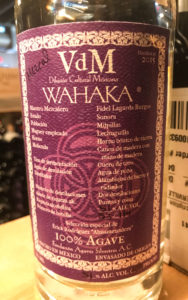
Wahaka VdM Sonora – Lechuguilla
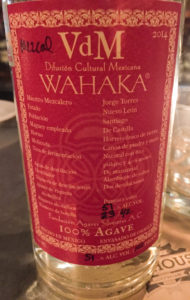
Wahaka VdM Nuevo Leon – De Castilla
Nuevo Leon - De Castilla
The De Castilla was made by Jorge Torres in Santiago, Nuevo Leon with agave De Castilla. The agave was cooked in an earthen pit, milled with stone and wooden mallets, fermented in wood with 60% pulque and 40% mosto and double distilled in a copper still. There were just 42 bottles released in 2014 at 51% ABV. This was also on all of our lists as one of the favorites of the night.
“Really well-rounded flavors of fresh agave, coconut, and figs.” — Tyler
“Floral and delightful on the nose, a bit sticky on the palate, full and rich with fruit and charred caramel notes” — Jonny
“Fresh and floral. Well integrated flavors. Quite interesting and complex.” — Joseph
Sonora - Lechuguilla
The Lechuguilla was made by Fidel Lagarda in Milpillas, Sonora with agave Lechuguilla. The agave was roasted in an earthen pit, milled by hand with an ax, fermented in a leather sack, and distilled in a modified truck radiator. There were 114 bottles of this released in 2015 at 48.8% ABV. The front label of this bottle states that it was bottled from Almamezcalera and we suspect that some of the other VdM mezcals may come from that source as well. This one helped us close the night strong as all three of agreed this was one of our favorites.
“Flan, 7UP slushie, cedarwood. Ending on a high note, the last two were great” — Tyler
“So Unique! Love this, awesome…hard to explain but this is beautifully created, slight taste of flan, slight taste of chickpeas” — Jonny
“Silky, sweet roasted agave, a lovely creaminess. A whole lot happening here, but hard to describe. Exceedingly pleasant.” — Joseph
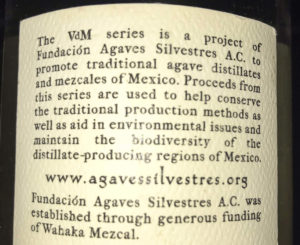
The back label of a Wahaka VdM bottle
The big question we hear a lot about Wahaka VdMs is related to cost. Most of the bottles we’ve seen fall in the $200-$250 price range. So why are they so expensive? For starters, you’re paying for incredible, one-of-a-kind mezcal. Secondly, proceeds from Wahaka VdMs benefit the Fundación Agave Silvestres, a non-profit organization that is dedicated to the reforestation of wild agave in Mexico as well as the protection of traditional agave distillation and production methods.
Tasting these incredible spirits back-to-back really gives you an idea of the scope and variety that is possible in mezcal, and we highly recommend trying some of these VdMs if you get a chance. We especially enjoyed the Oaxaca – Penca Verde, Guerrero – Papalote, Nuevo Leon – De Castilla, and Sonora – Lechuguilla. Do you have a favorite Wahaka VdM that you’ve tasted? Let us know in the comments below.


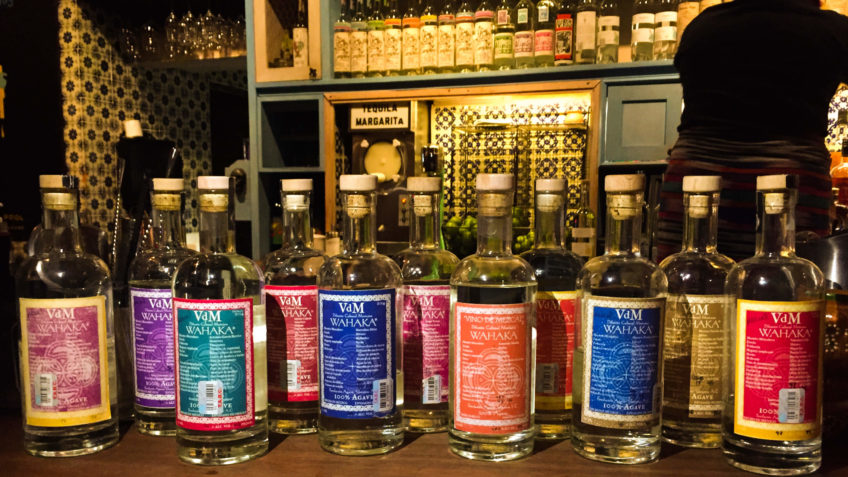
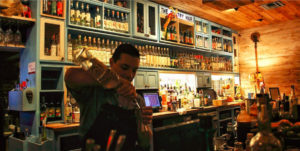

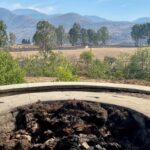
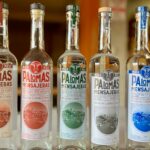
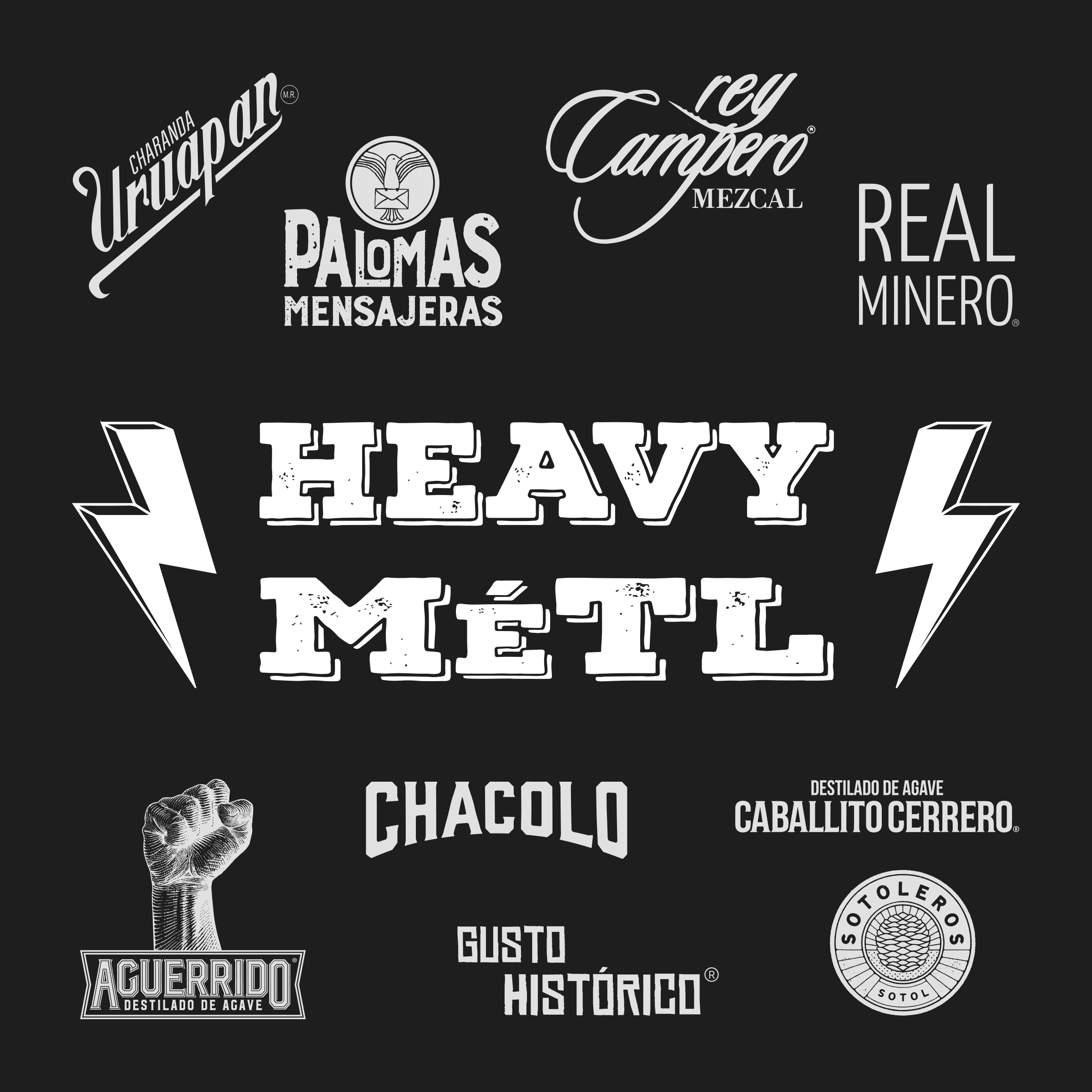
Squashplayer
6 years agoThe Sonora-Lechuguilla is easily the most interesting, unique, and “different” mezcal I have ever tasted. Each time I taste it I like it more and more. Well worth the high price tag, especially when know that part of the cost is going to the preservation of wild agave and the tradition of single farm mezcal production.
raza
7 years agoThanks for the in detail write up!!
A few points of clarification —
– All VdMs were sourced by others for us…Erick Rodriguez did the first batch and continuously helps us but we also asked Ulises and Chaneque to help us source some as they also have done very interesting travels throughout Mexico…
– The number of bottles per VdM variety can be a little deceiving — this is the actual number of bottles that we were able to export. It doesn’t necessarily reflect the number of bottles per batch. In some cases, Erick bottled some himself for sale in Mexico and so on. We don’t have an exact number of liters per batch across the board so decided to use this number instead.
– your tastes are impecable as your favorites match ours very closely